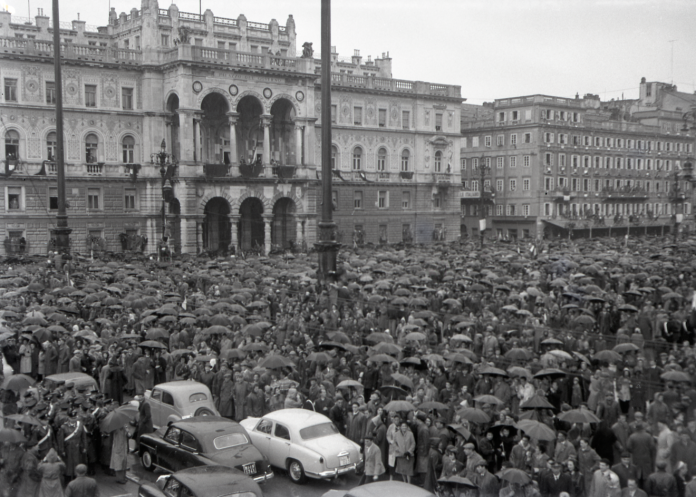by InTrieste
In a city often seen as a crossroads of Europe, the Museum of Oriental Art hosted an evocative celebration of Trieste’s layered past on Friday with the unveiling of UnderTs – The Story Told from the Underground, a documentary that dives into the complexities and challenges of the city’s modern identity. The event marks 70 years since Trieste rejoined Italy in 1954, a turning point that still resonates among the city’s multigenerational families and echoes through its historic streets.
The commemorative documentary project was introduced to the public by Giorgio Rossi, Trieste’s Councillor for Cultural and Tourism Policies, alongside the documentary’s director, Debora Desio. “Knowing our history is essential,” Rossi told the audience at the press event, “and it’s especially important that young people understand that Trieste was, and continues to be, a model of coexistence.”
UnderTs aims to capture this sense of coexistence by examining Trieste’s unique, multi-ethnic identity through untold narratives. The film traces a timeline spanning from the Paleolithic period to the 20th century, placing a special focus on pivotal events from the years just prior to World War I to Trieste’s reunification with Italy on October 26, 1954. Desio and her co-creators, Massimo Sgambati and Cristina Duro, spent months interviewing families and descendants of Trieste’s storied residents. Their goal: to reveal how rapid social and political changes transformed the once-cohesive population of the Austro-Hungarian Empire into a mosaic of small, fragmented communities shaped by nationalist sentiment.
The heart of the film, Desio explained, lies in its depiction of the mixed sentiments surrounding Trieste’s return to Italy. The welcome for Italian troops in 1954 was famously enthusiastic—but was it solely out of patriotism, or had the years of instability left residents yearning for any symbol of hope? Through personal recollections and family stories, UnderTschallenges viewers to reconsider how larger geopolitical forces can impact the daily lives and loyalties of a community.
“The younger generations need to see how Trieste came to represent both the strengths and struggles of a multicultural society,” Rossi added, hinting at the documentary’s mission to create a historical bridge between past and present.
Directed by Andrea Crevatin, a 23-year-old local filmmaker, UnderTs approaches this monumental subject with a fresh eye. The film’s 90 minutes are split into two parts, beginning with the early significance of Trieste as a key trading port and continuing through its modern transformation. The first section explores the city’s rich heritage from ancient times to the Middle Ages, a period when Trieste was continually coveted for its strategic port. The second half fast-forwards to the dramatic 20th century, chronicling an era of upheaval that saw an ethnically diverse population splinter under the pressures of war, shifting borders, and nationalist fervor.
Using Trieste’s underground and its forgotten spaces as a metaphor for the buried stories of the past, UnderTs sheds light on the lesser-known histories of communities affected by these shifts, including Jewish families, refugees, and prisoners of war. The documentary paints an expansive view of Trieste’s melting-pot population, reflecting the composition of nearly nine present-day nations that were once neighbors under the Austro-Hungarian Empire.
The first public screening of UnderTs is scheduled for Monday, November 4, at 5:30 pm in Sala Luttazzi, with free admission. The screening is expected to attract audiences from all walks of life in Trieste—an invitation to revisit the past, with the hopes of sparking a broader understanding of how this city’s unique history continues to shape its character today.





























